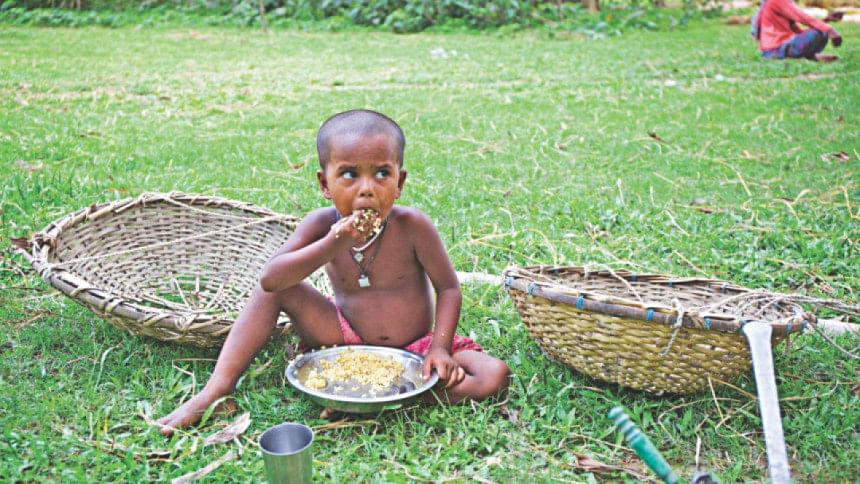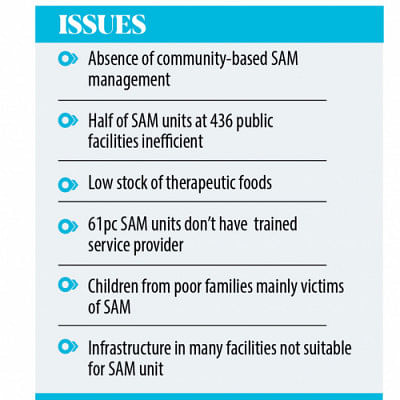Severe Acute Malnutrition: Nine out of 10 children not getting treatment


Around nine in every 10 children under age five who suffer from severe acute malnutrition (SAM) and have different health complications remained out of treatment coverage in 2022, shows data of Directorate General of Health Services.
According to the World Health Organization, SAM refers to very low weight for height.
Last year, there were around 95,600 SAM children with different health complications in the country.
Of them, only 23,400 were detected through screening, and 12,083 were admitted to SAM units, which are specialised arrangements at healthcare facilities, according to data shared at a workshop at a Dhaka hotel yesterday.
In 2021, around 11,000 SAM children with complications received treatment from the SAM units.
"The main reason behind this low coverage is the absence of community-based SAM management," Dr Moniruzzaman, programme manager of National Nutrition Service (NNS) at the health directorate, said at the event.
An assessment, jointly conducted by the NNS and Unicef in December last year, revealed that half of the SAM units at 436 public health facilities are not functioning efficiently.
Discussants at the event said that such inefficiency is also a reason behind the low coverage.
The inefficiency was attributed to six key factors, including unavailability of materials like therapeutic foods and weighing scales, and absence of trained doctors and nurses, according to the assessment.
During the 15-day long assessment, investigators found that only 225 SAM units had stock of F-100 therapeutic food and 268 had stock of F-75 therapeutic food.
F-75 and F-100 are fed to SAM children with health complications for them to gain weight.
In many SAM units, the therapeutic foods and other logistics were kept unused in the store and the health staff was unaware about it.
The available stock of these foods, meanwhile, has severely declined. There were only 321 cartons of F-75 and 142 cartoons of F-100 in the government stock.
"If not addressed by April, there will be an acute shortage of these therapeutic foods," said Dr ATM Reaz Uddin, deputy programme manager at NNS, while presenting the findings of the assessment.
The assessment also revealed that around 61 percent of SAM units did not have any trained service provider present.
During the discussion, divisional health directors and health experts from the DGHS and Unicef highlighted that the existing programme to manage SAM needs to be redesigned targeting poor people.
"Children from poor families are mainly the victims of severe acute malnutrition. It is tough for their guardians to stay at hospitals for a long time for treatment without any kind of support," said Dr Muniruzzaman.
Speaking at the event, Dr Monzurul Murshid, director (health) of Khulna Division, said the infrastructure in many health facilities is not suitable to run a SAM unit.
"There is also a lack of proactivity among health officials to maintain standard operation of SAM units. Despite repeated directives, there is no progress [at different facilities]," he said.
Presided over by Line Director of NNS Dr Md Abdul Mannan, DGHS Director General Prof Abul Bashar Mohammed Khurshid Alam spoke at the event as chief guest.

 For all latest news, follow The Daily Star's Google News channel.
For all latest news, follow The Daily Star's Google News channel. 



Comments